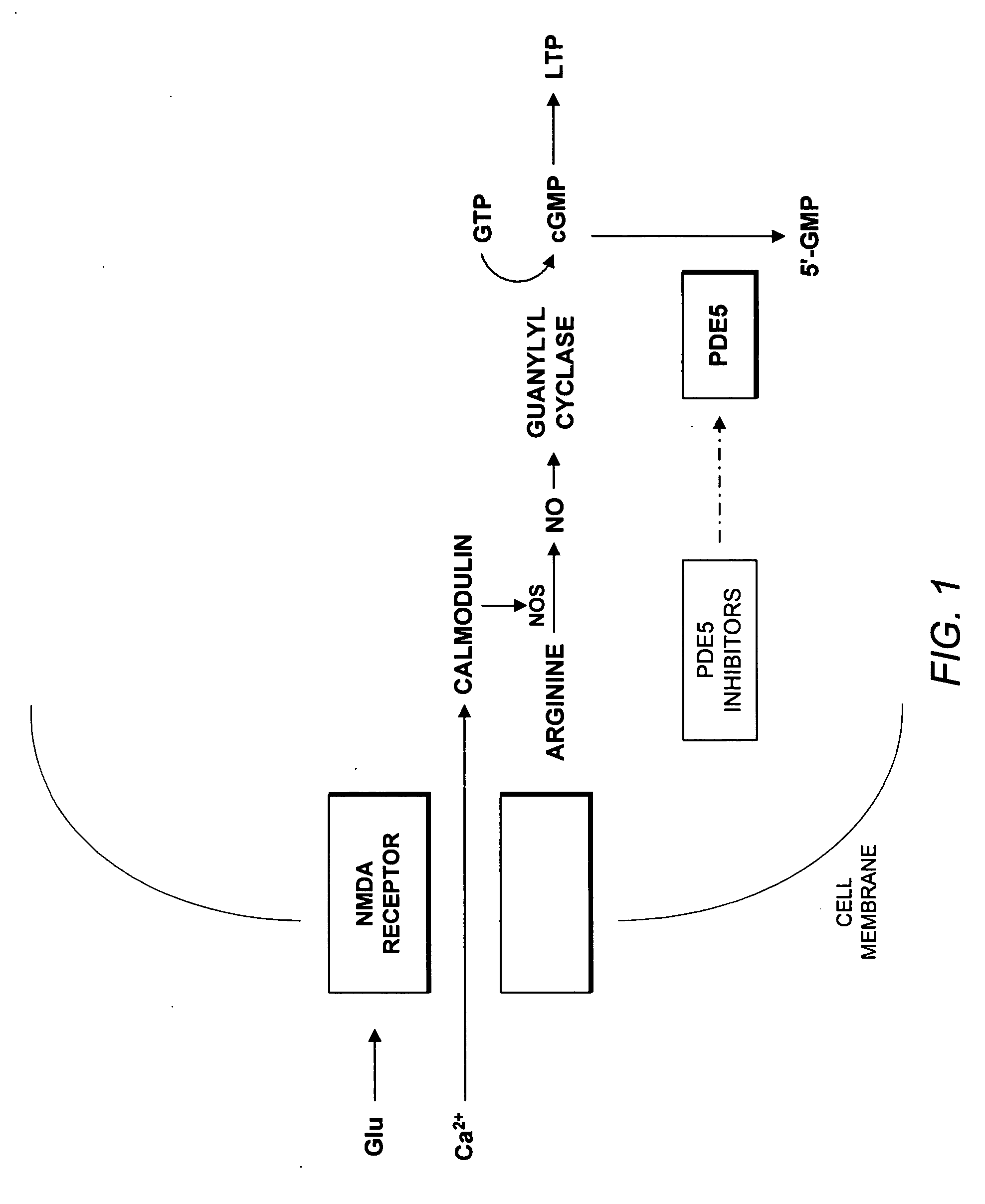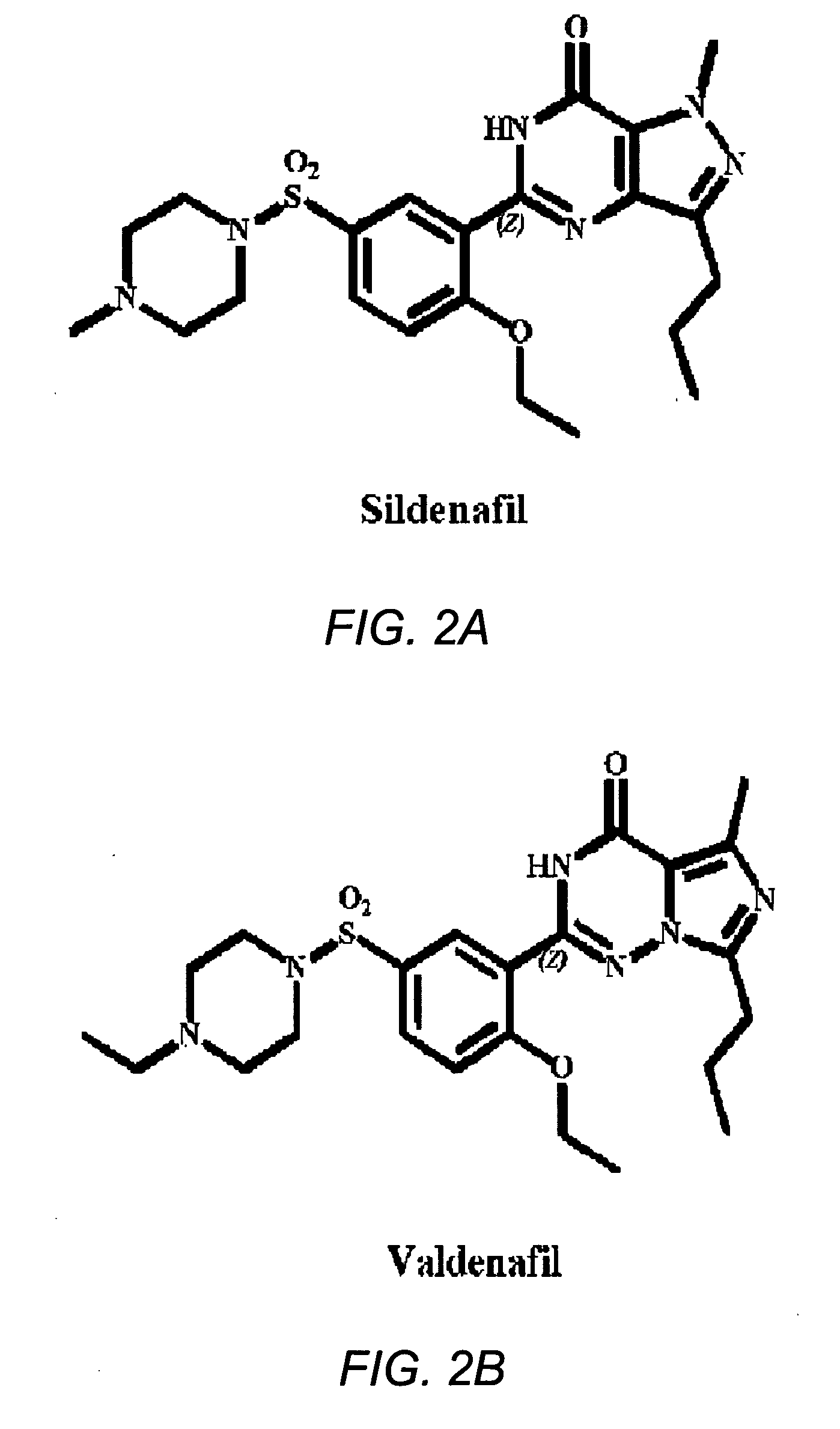Use of phosphodiesterase 5 (PDE5) inhibitors in the treatment of schizophrenia
a phosphodiesterase and inhibitor technology, applied in the field of use of phosphodiesterase type five (pde5) inhibitors for the treatment of schizophrenia, can solve the problems of chronic and disabling disease, heavy burden on the patient's family and relatives, isolation and neglect,
- Summary
- Abstract
- Description
- Claims
- Application Information
AI Technical Summary
Benefits of technology
Problems solved by technology
Method used
Image
Examples
Embodiment Construction
I. Overview
[0032] The present invention addresses the problem of inadequate pharmacological treatments for schizophrenia. Current treatments are relatively ineffective for cognitive impairments of schizophrenia—a problem that the National Institute of Mental Health (NIMH) has identified as a major priority for treatment development. A number of antipsychotic drugs are currently available for the treatment of schizophrenia. None are adequately effective, particularly for negative and cognitive symptoms. Current treatments are also relatively ineffective for negative symptoms and are effective for psychotic symptoms in roughly 70% of patients. No treatment has been shown to prevent progression of the illness, which may reflect neurotoxicity. Current treatments also have various other adverse side effects and limitations. Approximately 1% of the population suffers from schizophrenia and almost all of these individuals could potentially benefit from a drug that improves the characterist...
PUM
| Property | Measurement | Unit |
|---|---|---|
| molecular mass | aaaaa | aaaaa |
| Mental Disorders | aaaaa | aaaaa |
| size | aaaaa | aaaaa |
Abstract
Description
Claims
Application Information
 Login to View More
Login to View More - R&D
- Intellectual Property
- Life Sciences
- Materials
- Tech Scout
- Unparalleled Data Quality
- Higher Quality Content
- 60% Fewer Hallucinations
Browse by: Latest US Patents, China's latest patents, Technical Efficacy Thesaurus, Application Domain, Technology Topic, Popular Technical Reports.
© 2025 PatSnap. All rights reserved.Legal|Privacy policy|Modern Slavery Act Transparency Statement|Sitemap|About US| Contact US: help@patsnap.com



